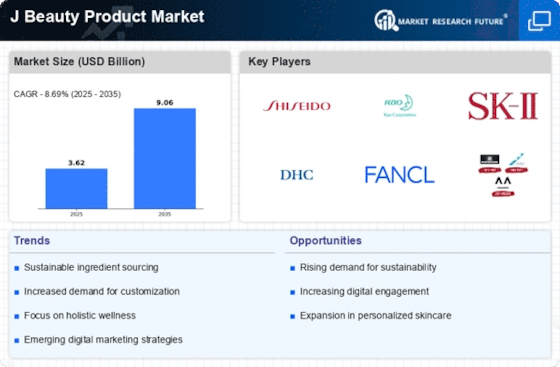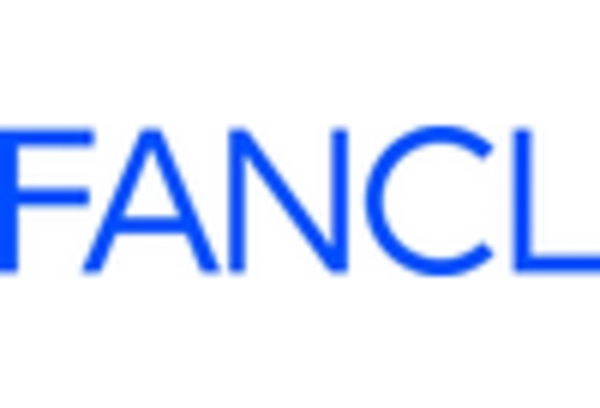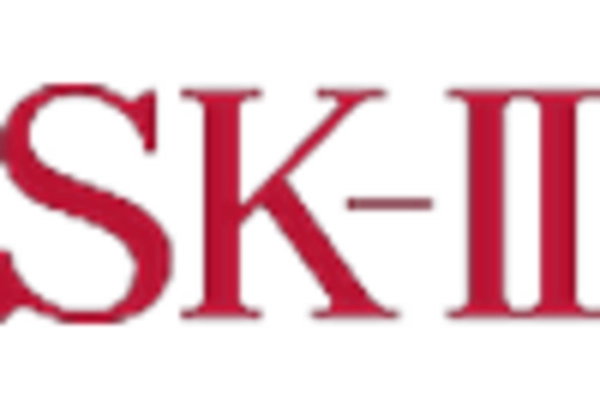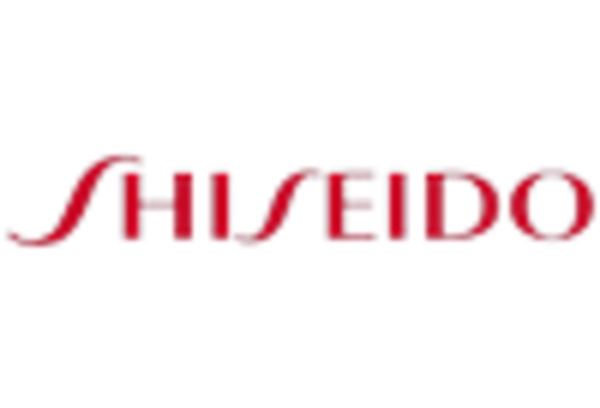The J Beauty Product Market is currently characterized by a dynamic competitive landscape, driven by innovation, sustainability, and digital transformation. Major players such as Shiseido (Japan), Kao Corporation (Japan), and SK-II (Japan) are at the forefront, each adopting distinct strategies to enhance their market positioning. Shiseido (Japan) emphasizes a strong commitment to sustainability, integrating eco-friendly practices into its product development and packaging. Meanwhile, Kao Corporation (Japan) focuses on digital transformation, leveraging advanced technologies to optimize customer engagement and streamline operations. SK-II (Japan) has carved a niche through its premium positioning and targeted marketing strategies, appealing to a discerning consumer base. Collectively, these strategies not only enhance brand loyalty but also intensify competition within the market, as companies vie for consumer attention in an increasingly crowded space.
In terms of business tactics, localization of manufacturing and supply chain optimization are pivotal. Companies are increasingly localizing their production to reduce costs and enhance responsiveness to market demands. The J Beauty Product Market appears moderately fragmented, with a mix of established brands and emerging players. The collective influence of key players shapes market dynamics, as they engage in strategic collaborations and partnerships to bolster their competitive edge.
In August 2025, Shiseido (Japan) announced a partnership with a leading tech firm to develop AI-driven skincare solutions. This strategic move is significant as it positions Shiseido at the intersection of beauty and technology, potentially revolutionizing personalized skincare. By harnessing AI, the company aims to enhance customer experiences and tailor products to individual needs, thereby reinforcing its market leadership.
In September 2025, Kao Corporation (Japan) launched a new line of eco-friendly beauty products, aligning with its sustainability goals. This initiative not only responds to growing consumer demand for environmentally conscious products but also strengthens Kao's brand image as a responsible corporate entity. The launch is indicative of a broader trend within the industry, where sustainability is becoming a key differentiator.
In October 2025, SK-II (Japan) unveiled a digital platform that integrates augmented reality (AR) for virtual skincare consultations. This innovative approach allows consumers to engage with the brand in a novel way, enhancing the shopping experience. The strategic importance of this development lies in its potential to attract tech-savvy consumers and create a more immersive brand interaction, which is crucial in today’s digital-first environment.
As of October 2025, current competitive trends in the J Beauty Product Market are heavily influenced by digitalization, sustainability, and the integration of AI technologies. Strategic alliances are increasingly shaping the landscape, as companies collaborate to enhance their technological capabilities and market reach. Looking ahead, competitive differentiation is likely to evolve, with a pronounced shift from price-based competition to a focus on innovation, technological advancements, and supply chain reliability. This evolution suggests that companies that prioritize these aspects will be better positioned to thrive in the future.


















Leave a Comment